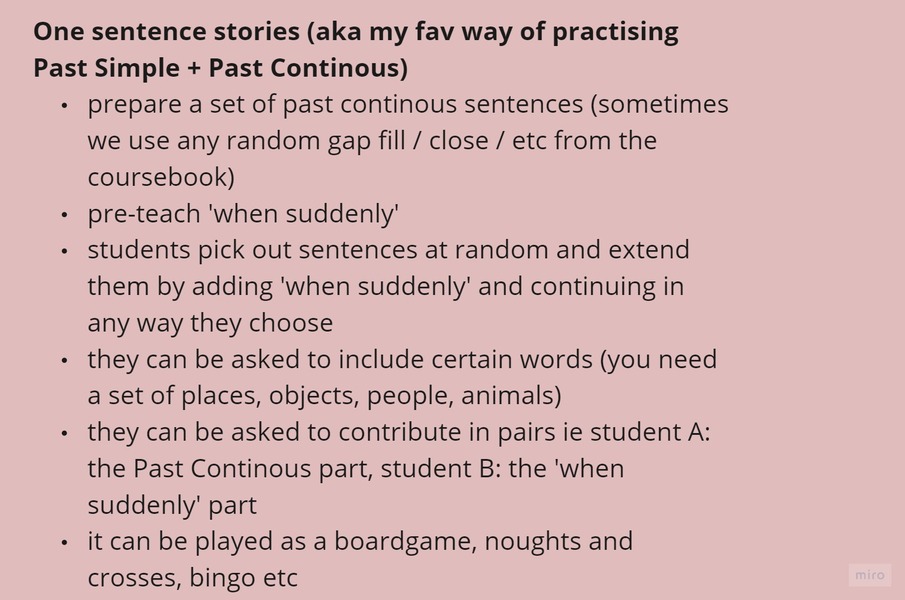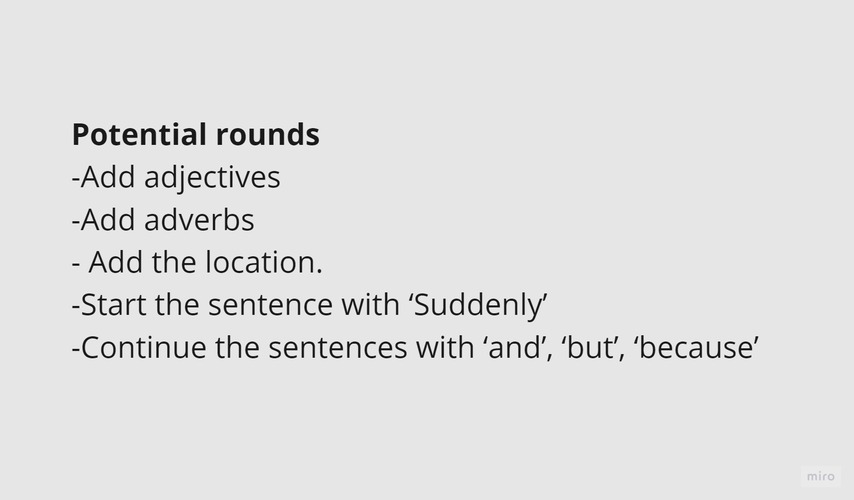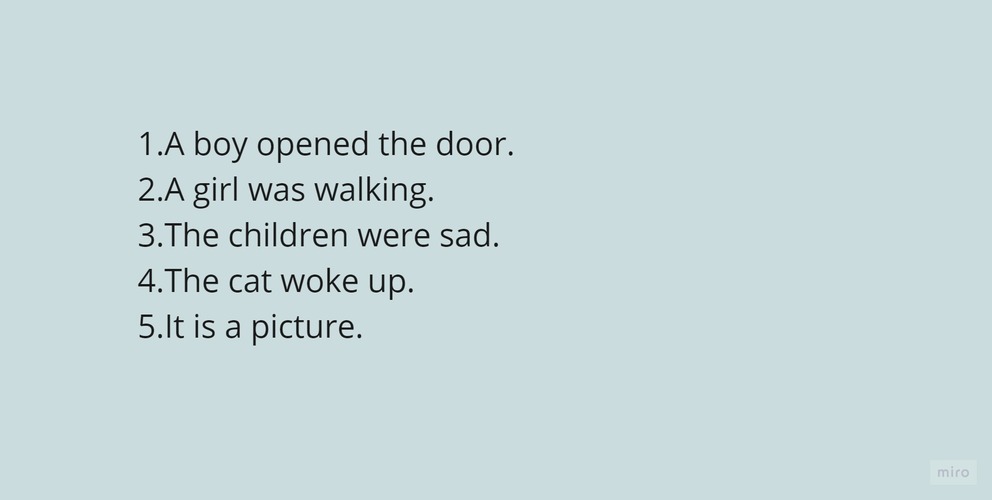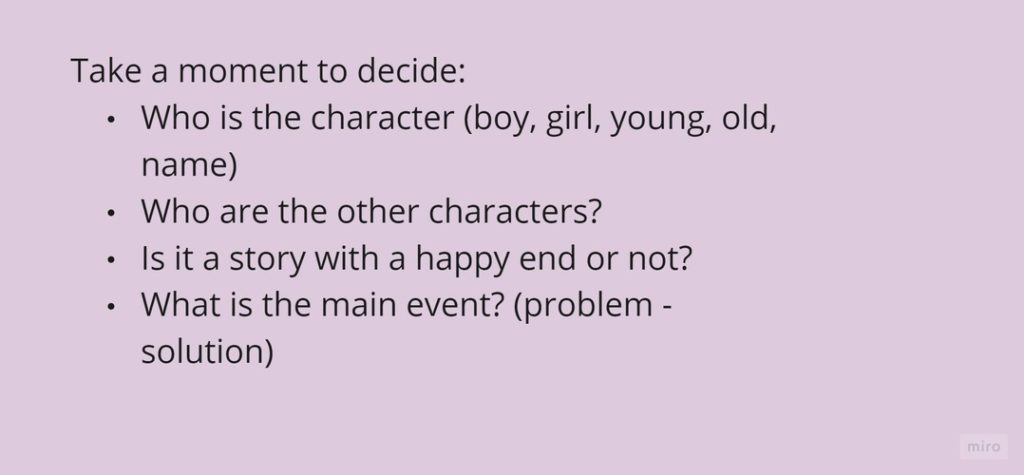
Ingredients
- A group of teenagers or pre-teens
- Paper and pen
- The theme of the story. We are preparing for the Cambridge exams and so we used pictures and the exam format of the story writing in KET (three pictures) and the exam format of the story writing in PET (the opening or the final sentence).
Procedures
- We start with some warming-up activities and they depend mostly on the coursebook and the curriculum but they all they have one thing in common – they help the kids get ready and get in the mode for the proper writing task.
- Some of the potential exercises include: talking about the story, generating vocabulary to support the weaker students or less creative students, see the post here (especially Sstep 2: Two crazy words) or the following two
- One-line stories

- Make it better: students start with a set of simple sentences and work in pairs or individually, trying to develop it in a few rounds. The students can either work on the same handout using a set of colourful pens (a different colour for each round) or a few copies of the same handout. It can be followed up with a reading session and choosing the most interesting sentences of all but it is not quite necessary to include one more competitive element. The number of rounds can be limited or extended, depending on the age and level of the students.
- We include ‘The Thinking Time‘ to give the students a chance to imagine their story and make the necessary decisions. These are the questions which they might be asked to consider:
- Everyone can choose their own pen name, too.
- I make it more formal by announing that we are going to choose the best story and that I am going to ask my colleagues to help me.
- The students start writing, the teacher monitors and I help out with vocabulary when necessary.
- There is not one time slot or the number of words required. We are practising in the exam format but without too many limitations at this point.
- Afterwards, we type the stories up and share them with our BKC teachers who vote for the one they like best. I don’t correct any mistakes at this point.
- I prepare diplomas of participation for all the students and one more for the winner and there is a reward (food as this is the one hobby that we all share, me and the students). We have a ceremony that involves a speech from the teacher, applause for everyone and for the winner and eating because they all share the reward. Our winner is the master of ceremonies of the day.
- The final stage is the error correction. In the original handwritten copies I underline a few mistakes that the kids correct later on. So far, these have been mostly in the area of spelling, tenses or the general style.
Why we like
- The students get really involved in the writing process and looking at how they write away, it is really difficult to believe that teenagers don’t like writing, that they are not motivated or that they are not creative at all.
- If carefully scaffolded, it is an activity that all the students can complete and it is very mixed-ability-groups-friendly. Since there is not word limit, everyone writes as much as they can and want. The last time we did it, using the PET format with 100 words as the limit, I received entries of about 70 words but also entries of 400 words.
- It is an amazing opportunity for the students to express themselves. They can choose the storyline, the genre and the style. This year they produced a horror story, a love story, a post-modernist short story and a diary entry, among others. We have been working together for at least two years (and for about six with some of them) and yet, I was still surprised that they can write like that. Because they can and they are amazing kids although this is not some kind of a writing-obsessed and literature-obsessed group (unlike their teacher) but a bunch of typical teenagers: always tired, always under-slept, who’d always choose ‘no homework’ over ‘homework, please’ and ‘no test’ over ‘test, please’ and so on. And yet.
- This time round I have decided to include the most beautiful comment that each story got from the readers and, in a way, it started to resemble the categories that we have at different film festivals, although, to be fair, they can be quite random as they are generated by the readers, such as ‘your dreams will come true award’, ‘I can’t believe a child has written it’ or ‘A kind heart’. And my students really liked it and were touched by that.
P.S. I would love to share these stories here but some of my students keep them secret even from their parents. Their stories and their copyrights. So be it.
Happy teaching!



